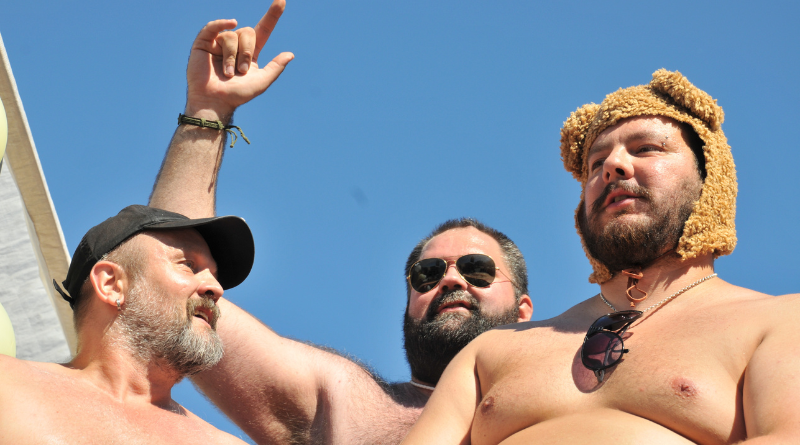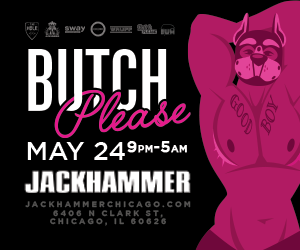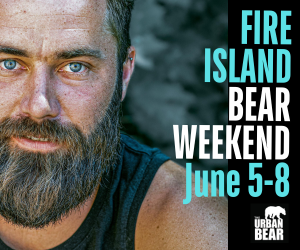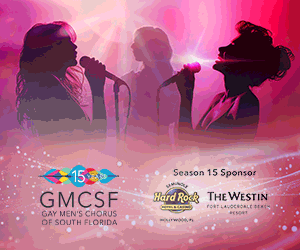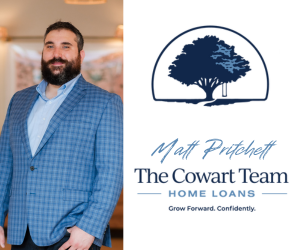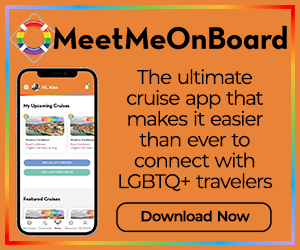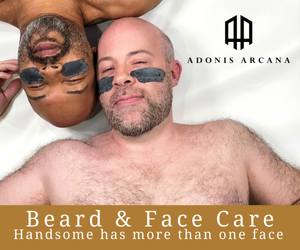Bear Tracks: Community
In this edition of Bear Tracks Les K Wright analyzes the many different definitions of what a community is and then examines the bear community and the intersectionality that exists within it.
The word “community” is bandied about everywhere. It evokes a sense of warmth and belonging, like “love” and “friendship.” Everyone pictures something definite in their mind. But, when pressed, it becomes hard to define in a way everyone would agree on. “Community” can be as small as a small village, an urban neighborhood (as Jane Jacobs described in The Death and Life of Great American Cities), or an intentional community, such as a monastery, Jonestown (Jim Jones’ “drink the Kool-Aid” death camp in Guyana), Fruitlands (a utopian agrarian commune based on transcendentalist principles in central Massachusetts) or the Oneida community (a religious community that experimented with alternative sexual practices). It can be as expansive as “the African American community,” “the Islamic community,” “the academic community,” “the LGBTQ+ community,” or (absurdly) “the global community.”
Aristotle was the first to define “community” as “a group of men having shared values.” During the Middle Ages there were two words in Middle English—”gemænscipe” (Gemeinschaft in German) and “community” (borrowed from the French communité). The word was first published in 1395 in the “Remonstrance against Romish Corruptions in the Catholic Church” which was addressed to the people and parliament of England. Encompassing both of these aspects—of shared values and as an organized political resistance—“community” took on critical significance in the wake of the Stonewell riots in 1969. The Gay Liberation Front adopted as a way to unify and mobilize us sexual “perverts,” to instill within us and society as a whole an awareness of our value, and to organize us around a cohesive shared identity to fight for positive social change. At the time the word “gay” was a positive term homosexuals used among themselves. The slogan “Gay is good” was aimed at both us gays and the general public. At the time “gay” was a broad, rather unspecified term that explicitly encompassed “gay guys and gay gals” and implicitly included others non named.
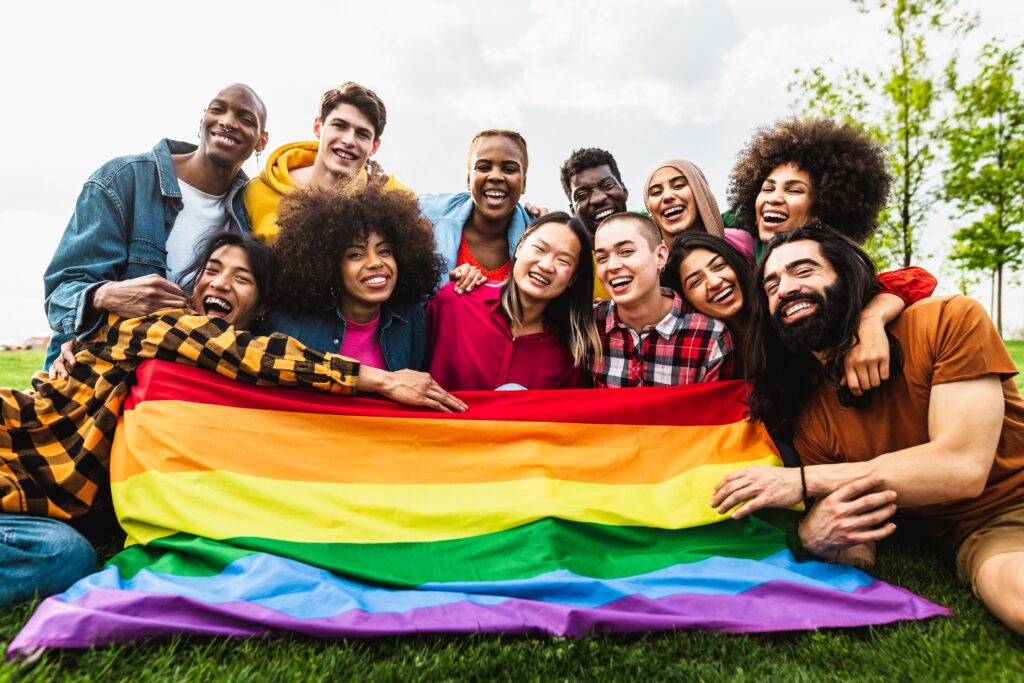
In the 1990s Toby Lowe examined the use and misuse of the term “community” in politics. He argued that the definition of “community” must account for both a community of place and something more dispersed (academic community or community of faith), account for the sense of togetherness, the sense of identity and belonging (as an “in group” or an “out group”), account for how a community shapes our sense of “good” and “bad,” and account for how people can be part of different communities at the same time. Fundamental to Lowe’s understanding of community is a group of people who share an identity-forming narrative. They build “the shared story archetypes (characters) of that community into their sense of themselves; they build the history of those communities into their own personal history; and they see the world through the lens of those shared stories.” This is why the story of the Stonewall riots is foundational to the sense of gay (LGBTQ+ or queer) community and why in recent years the important role of the self-identifying “drag queen” Marsha P. Johnson, now recognized as a transwoman of color, has inflected this narrative of origin. This is why recognizing the birth of bears in San Francisco is so important to our bear community. Lowe pushes against the slipperiness of the word, as in “community policing,” which “turns the legitimate monopoly power of the state over the use of force into something warm and cuddly.” The power of community lies in its role in creating social change—narrative change is part of social change and social change is always particular, looking and feeling different, depending on the community of which you are a part.
In 1983 in his Sexual Politics, Sexual Communities: The Making of a Homosexual Minority in the United States 1940-1970 John D’Emilio presents a detailed picture of the social place of the homosexual in America from colonial times until the immediate post-World War II years. He demonstrates the legitimacy of gays as a “minority group.” In his 1982 The Homosexualization of America AustralianDennis Altman examines the framing of the gay community in the US on the model of ethnic communities in the US. And in his seminal 1994 study Coming Out Under Fire: The History of Gay Men and Lesbians in World War II Allen Bérubé unearthed how gay men and lesbians discovered each other (in surprising numbers) while serving in the war. He records how San Francisco, a primary discharge station at war’s end, became home to many of these war veterans. Finding the City by the Bay a friendly and welcoming place, they stayed in large numbers and created a community for themselves. Preceded by the bohemian Barbary Coast (Pacific Avenue between Montgomery and Stockton Streets), after World War II Polk Gulch (Polk Street) served as the first commercial, entertainment, and residential explicitly gay neighborhood.
I have long thought of “gay community” as having a physical place. After reading account after account of the gay neighborhood in San Francisco, in 1979 I moved literally to Castro Street. My apartment was one block from the intersection of Castro and 18th Streets, at that time called “the crossroads of gay Mecca,” “the Navel of the Gay World. “The first gay neighborhoods arose, typically, in bohemian neighborhoods, where hobos, prostitutes, poor people, queers, Jews, and other social outsiders could afford housing. The term “gay ghetto” was borrowed from the term “ghetto,” neighborhoods where local governments permitted Jews to live. (The Venetian Ghetto was the name of the walled neighborhood where, beginning in 1516, the Doge and Venetian Senate locked Jews in for the night.) In the US, the first gay ghettos were located in working-class neighborhoods or in the neglected fringes of a downtown area. The first gay-identified neighborhood was Berlin’s Schöneberg in the 1920s. The first gay neighborhood in the US was the bohemian Greenwich Village. Following the Stonewall riots, the West Village and Christopher Street, its commercial artery, became synonymous with “gay neighborhood.” Other notable gay villages include Boystown in Chicago, West Hollywood and Silverlake in Los Angeles, Boston’s South End and Provincetown in Massachusetts, South Beach and Fort Lauderdale/Wilton Manors in Florida, Asbury Park and Ocean Grove in New Jersey, Davie Village in Vancouver, and The Village in Montreal. Among the best known European gay neighborhoods are Soho in London (Earls Court when I caroused in London in the 1970s and 1980s), The Marais in Paris, Schöneberg in Berlin, Reguliersdwarstraat in Amsterdam, Eixample in Barcelona, and Chueca in Madrid. As gay neighborhoods gentrified in the 1980s and 1990s, many long-time gay residents were forced out, being replaced by well-heeled heterosexuals. Well-to-do (mostly) gay, white, cisgender men now live in upscale neighborhoods, like Palm Springs, Fort Lauderdale, or Manhattan’s Upper West Side.
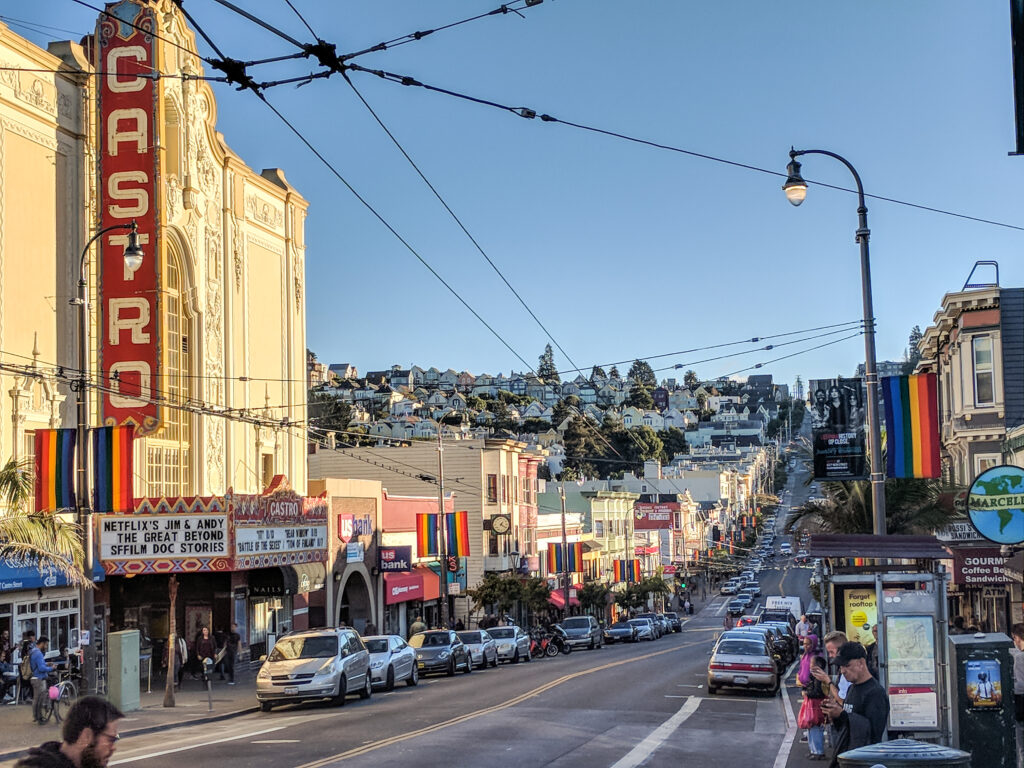
The era of “gayborhoods,” as these gay enclaves were later dubbed, has, for the most part, come and gone. Many of the places I named above are no longer gay. Some are now gay retirement communities. Some younger gay men no longer see a purpose in living in a gay neighborhood. And dozens of new gay neighborhoods are emerging in smaller cities across the US, like Pittsburgh, Rochester (NY), Rehoboth Beach (DE), Houston, Minneapolis, Ashville (NC), Albuquerque (NM), and others. Gay resort communities, such as Fire Island, Key West, Rehoboth Beach, and Provincetown, continue to flourish.
While San Francisco is considered the first bear capital, physical bear communities have come together only temporarily. Bear clubs, modeled on gay motorcycle clubs, organized for social purposes, infusing a greater sense of purpose to the bear community through nonprofit fundraising activities, especially for AIDS causes. This is still a key activity of bear clubs and bear contests. The now-defunct International Bear Rendezvous in San Francisco has been succeeded, most notably, by Provincetown Bear Week and the Sitges Bear Week Festival in Spain. Bear runs, bear weekends, and bear festivals may be seen as temporary communities (which other gay communities, such as the radical faeries, call “gatherings”).
The LGBTQ+ community has been profoundly changed and has found its way into increasing visibility and (I hesitate to say) “acceptance” by the mainstreaming afforded by consumerization. Neighborhood gentrification, increased visibility of Pride marches, and the promulgation in mass media of the myth of “gay wealth” led to the recognition of the economic value of gay dollars and the staging of gay events for their potential lucrativeness. It is worth noting that marketers often base their strategies on erroneous stereotypical assumptions about “wealthy gays.” Gay men in the media are usually portrayed as individuals or couples, but rarely shown in gay community—except for Pride parades. Gay and Lesbian Pride marches began as political protests, asserting our visibility. By coopting and mainstreaming Pride parades, corporations have transformed them into long commercials where they advertise the products they sell to LGBTQ+ people and celebrate the profits they make. Browse through the latest issue of The Advocate to see what I’m talking about. Unlike corporate purveyors of LGBTQ+ consumerism as queer identity, bear merchandizing is still mostly limited to small businesses.
The role of social media has further complicated the sense of community. Social media has had the power to help LGBTQ+ people to connect socially and sexually, to help in identity creation, and in building community. But it has turned out to be a double-edged sword. Mainstream media reports there is now a crisis of loneliness in America, due in part to the lack of in-person interaction on social media. The anonymity of social media makes it an unsafe place where scammers take advantage of individuals legitimately seeking connection, the scammers’ anonymity allowing them to remain completely unaccountable. This breach of trust undermines the original intent of social media communications. For example, it has transformed the in-person encounter with a potential sex partner, where behavior, facial expressions, and body chemistry can be discerned when “reading” a person, into an encounter with photos and verbal descriptors that often bear no resemblance to the person hiding behind them and/or a very exacting checklist of physical characteristics and sexual activities that seem to screen out almost everyone. Hooking up and initiating a first date are transformed into total transactional objectification. Selecting a sex partner becomes much the same as shopping for shoes online.
As a teacher of writing I try to guide my students toward clarity of thought in their writing. What are you trying to communicate? What are you trying to persuade the reader to understand? How are you trying to persuade the reader? Rhetoric, the art of persuasive speaking or writing, was the first of the seven subjects in formal education in the ancient and mediaeval Western world. Rhetoric investigates how language is used to organize and maintain social groups, construct meanings and identities, coordinate behaviors, mediate power, produce change, and create knowledge. In our contemporary world we encounter rhetoric most frequently in the language of advertisements, propaganda, and political speech. Clarity of thought is replaced with appeals to emotion and efforts to obfuscate meaning.
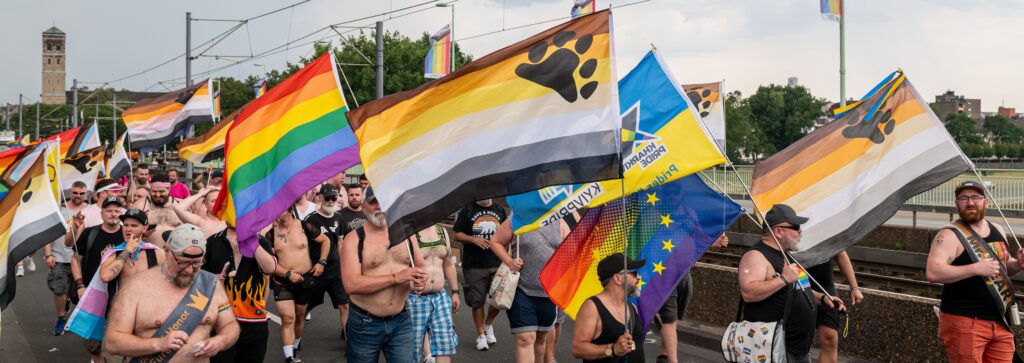
We have come a long way from the coinage of “’gay’ community” (which organized us queer outsiders into a community now able to mobilize us to take political action for social change and to instill within us a positive self-image and sense of belonging to a group. The term has been replaced by “LGBTQ+” and “queer” to expand and articulate the still growing sex and gender identities under one common umbrella term. The concept of “community” has been transformed into what Richard Pallardy calls “the bubble wrap of language.” The reality within the queer community is that, while we are, on the one hand, more or less on the same page as a group fighting for social and political justice, we are also more of a federation of different clans. Intersectionality now creates a way to identify and account for differences beyond the sex and gender categories. The realities of transwomen of color are different from the realities of gay white cisgender men. The realities of upper middle class gay white men are also different from the realities of the gay white cisgender male working poor. Socioeconomic class is one of the last realities that continues to go mostly unmentioned, unnoticed, and outright ignored, both in the queer media and queer communities.
All these levels exist within the bear community. When self-identifying bears emerged in the 1980s we bonded through a shared sense of physical characteristics (“beards, bellies, and body hair”) and of shared values (warm and cuddly, inclusive and “nonjudgmental”). Bear media quickly arose, which broadcasted this new identity and community far and wide, created a tenuous virtual community, and created a mythical community that exists solely in the dreamworld of advertising. The rise of bear clubs—bear community on a local and in-person level—has migrated to social media where real-world bear communities can communicate and virtual bear communities can exist solely on Facebook. Temporary in-person gatherings of bears at bear weekends and other bear events are created by many volunteers, merchants, media-disseminated news, and the dreamworld of advertising. While advertising the joy, camaraderie, and participation in a human-scale community, these events as broadcast through bear media also have the unintended consequence of promoting bears as having abundant disposable income and leisure time (and the impression of a “bear party circuit”), leaving many working-poor bears feeling overlooked, excluded, or “too poor to be a ‘real’ bear.”
Growing diversity within the bear community is putting the value of inclusivity into practice. Diversity has also been expanding the umbrella of bear identity and bear community—transbears, lesbian bears, mama bears, and, to a greater degree, BIPOC bears (although bears of color have been present from the earliest days). Butch, cis-men, and trans-masculine people, while associated closely due to their performances of masculinity, are very different clans, typically ignorant of each other’s concerns. Some butch, cis-men, and trans-masculine people identify as bears. Bear contests continue to be held and titleholders celebrated. But there has been a profound shift away from the physical attributes, talents, and other things of old-school (“look at me”) beauty pageants. Nowadays competition categories include the growing array of non-white, non-cisgender bears. Contestants are judged by past, present, and future involvement in representing the bear community, in educating others about us, in doing philanthropic work, in promoting diversity, acceptance, and good will within the bear community, and advancing positive social and political change. Many bears today point to the role of our community as a model for greater acceptance, inclusivity, and social harmony for society as a whole.
Help Les K Wright in his quest to document bear history by joining the Bear History Project International where you and a group of like-minded individuals can exchange ideas and help to preserve bear history and culture.

